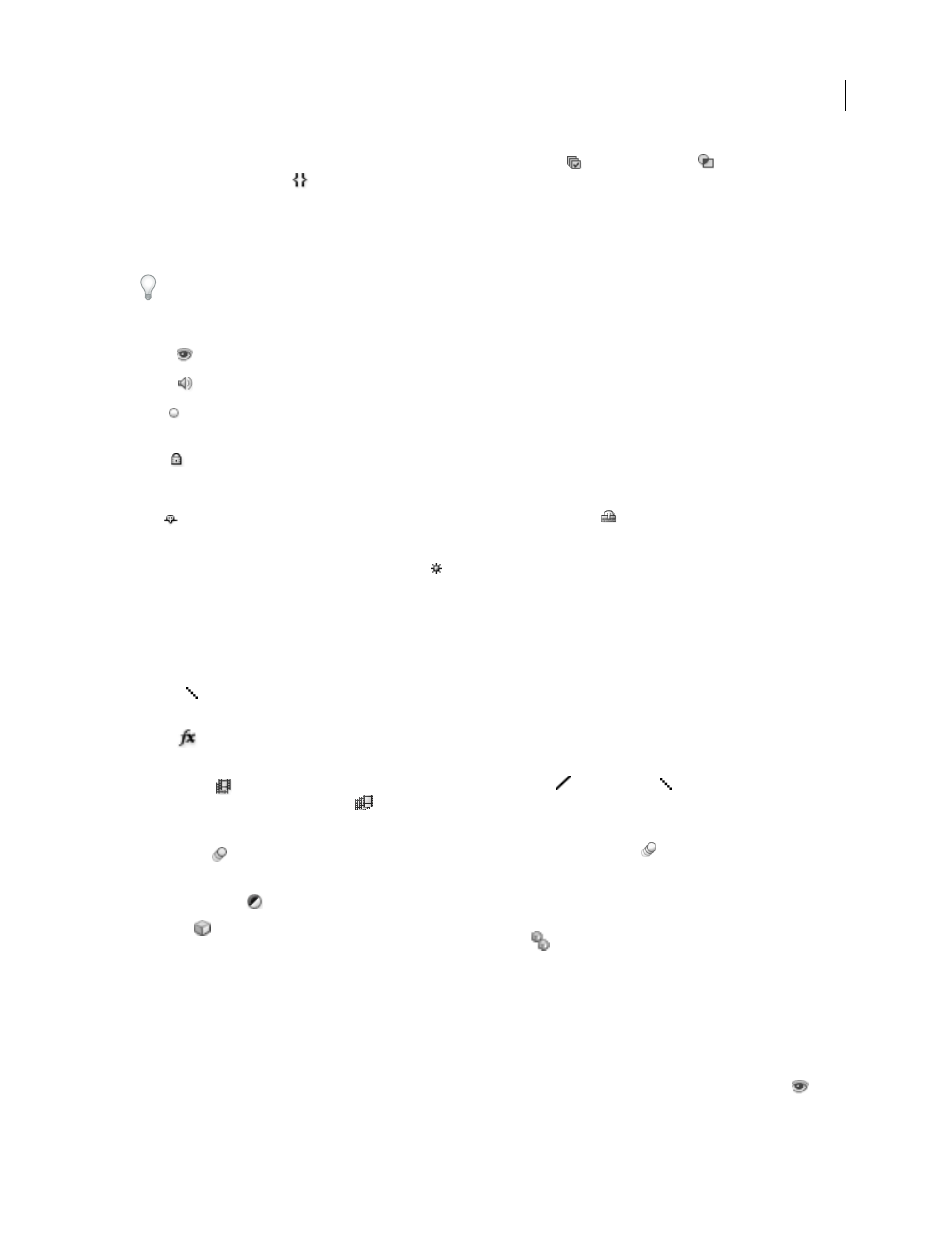Exclude a layer from previews and final output – Adobe After Effects CS3 User Manual
Page 153

AFTER EFFECTS CS3
User Guide
148
To show or hide columns in the Timeline panel, click the Layer Switches
, Transfer Controls
, or
In/Out/Duration/Stretch
button in the bottom left of the Timeline panel. Press Shift+F4 to show or hide the
Parent column. Press F4 to toggle the Switches and Modes columns.
The results of some layer switch settings depend on the settings of composition switches, which are in the upper right
of the layer outline in the Timeline panel.
Quickly change the state of a switch for multiple layers by clicking the switch for one layer and dragging up or down
that column for the adjacent layers.
Switches in the A/V Features column
Video
Toggles layer visuals on or off. (See “Exclude a layer from previews and final output” on page 148.)
Audio
Toggles layer sounds on or off.
Solo
Includes the current layer in previews and renders, ignoring layers without this switch set. (See “Solo a layer”
Lock
Locks layer contents, preventing all changes. (See “Lock or unlock a layer” on page 149.)
Switches in the Switches column
Shy
Hides the current layer when the Hide Shy Layers composition switch
is selected. (See “Show and hide
layers in the Timeline panel” on page 150.)
Collapse Transformations/Continuously Rasterize
Collapses transformations if the layer is a precomposition;
continuously rasterizes if the layer is a shape layer, text layer, or layer with a vector graphics file (such as an Adobe
Illustrator file) as the source footage. Selecting this switch for a vector layer causes After Effects to rerasterize the
layer for each frame, which improves image quality, but also increases the time required for previewing and
rendering. (See “Render order and collapsing transformations” on page 115 and “Continuously rasterize a layer
containing vector graphics” on page 151.)
Quality
Toggles between Best and Draft options for layer quality for rendering, including rendering to the screen
for previews. (See “Layer image quality” on page 150.)
Effect
Select to render the layer with effects. The switch does not affect the setting for individual effects on the
layer. (See “Delete or disable effects and animation presets” on page 352.)
Frame Blend
Sets frame blending to one of three states: Frame Mix
, Pixel Motion
, or off. If the Enable
Frame Blending composition switch
is not selected, the layer’s frame blending setting is irrelevant. (See “Apply
frame blending to a layer” on page 225.)
Motion Blur
Toggles motion blur on or off for the layer. If the Enable Motion Blur
composition switch is not
selected, the layer’s motion blur setting is irrelevant. (See “Use motion blur” on page 200.)
Adjustment Layer
Identifies the layer as an adjustment layer. (See “Create an adjustment layer” on page 136.)
3D Layer
Identifies the layer as a 3D layer. If the layer is a 3D layer with 3D sublayers—as is the case for a text
layer with per-character 3D properties—the switch looks like this:
. (See “About 3D layers” on page 171.)
See also
“Shortcuts for working with layers” on page 645
Exclude a layer from previews and final output
•
To prevent a layer from being rendered—both for previews and for final output—deselect the layer’s Video switch
.
